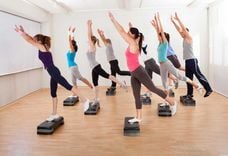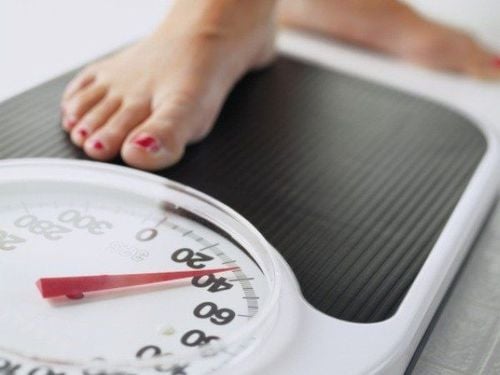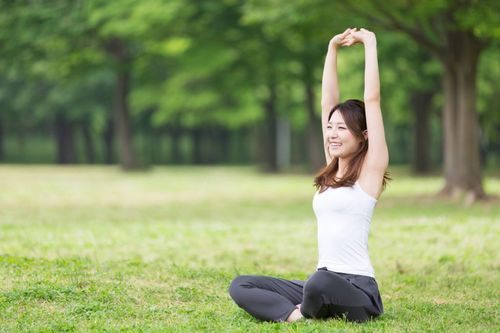This is an automatically translated article.
Some people have a habit of skipping the warm-up exercise for time reasons. However, doing this can lead to an increased risk of serious injury rather than difficulty in moving later. Therefore, we should warm up before exercising to limit unintended dangers.1. Correct understanding of warm-up before exercise
Warming up before exercise is that we do gentle exercises. This exercise will help loosen muscles and tendons. Our muscles and tendons are always connected and send information up the blood vessels to the brain. When performing a warm-up exercise, the brain will be provided with information and spread throughout the body to avoid stress on the organs and muscle mass
Warm-up exercise is a way for the body to get used to the intensity movement is higher than usual. Therefore, most exercises will gradually increase the frequency of movement to allow the body to adapt. Based on that, the body will minimize the risk of injury and help the practitioner achieve many positive results in the training process.
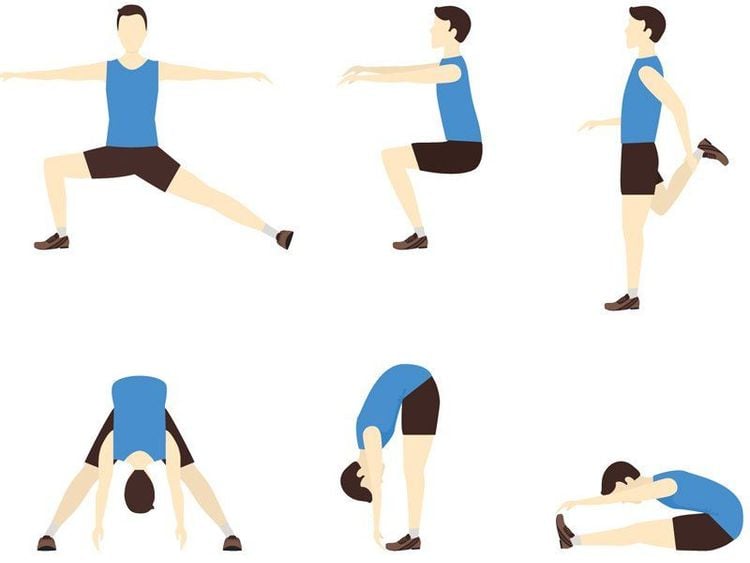
Bài tập khởi động là một cách cho cơ thể quen dần với cường độ vận động cao hơn bình thường
2. The benefits of warming up before exercise
Warm-up exercise is a form of signaling for the brain to send out information to the organs of preparation. When you warm up before exercising, the circulatory system and muscles will have time to adapt and not be shocked. This also helps to warm up the body. The fact that exercise causes sudden changes in body temperature is a very serious danger.
So, what other benefits do you get when doing a warm-up before exercise:
Increase blood circulation: Warming up helps the body gradually increase its temperature and also improves blood circulation thanks to that. At the same time, oxygen and hemoglobin are also supplied enough and more effective for the operation of muscle mass. As a result, the body ensures circulation, which increases the endurance of the practitioner. Dilate blood vessels: Muscle tension or capillary constriction are both dangerous manifestations that will lead to cardiovascular diseases. However, when doing a warm-up before exercise, good blood circulation will limit this to help the heart not be overloaded. Hormonal changes of the body: Movement can make the body feel good or comfortable. As a result, active hormones are secreted including cortisol and epinephrine. Hormones secreted will provide energy and balance carbohydrates and fatty acids to convert into fuel for the body to move. Increase the activity of the muscle mass: The body heats up the muscle mass is also gradually warmed up until hot. This has a good meaning for blood circulation without causing compression, minimizing pain and soreness for muscles. Warming up causes muscles to contract and relax, limiting the problems of muscle tension or cramps compared to a warm-up before exercise. As a result, the muscles work efficiently and increase strength. Makes movements easier: Our joints can stretch to perform difficult movements also need thanks to warm-up exercises. Create a sense of security for the brain: Warm-up exercise is a step to prepare the organs to gradually get used to and not fall into a state of stress. As a result, the brain will send a signal so that the muscles do not appear inhibited or fatigued when exercising. This means a great deal to athletes because it is effective for tournaments.
3. Some warm-up exercises
You can choose from a variety of warm-up exercises to relax your muscles before exercising. Here are some popular exercises for your reference:
Walking in place: You stand with your back straight and proceed to push your legs to look like walking. At the same time, the hands also beat to the rhythm like when you are walking. You do it from slow to fast within 3 minutes and feel the warmth of your body Rotate your wrists and legs: When going to school, teachers will always let you do this exercise before going to class. sports. Standing in one position you can rotate wrists, ankles, neck, knees and hips. Thanks to this movement, the organs will be maximally activated and relax the muscles to relax the muscles for heavier exercises. Elevate the knee in place: When the knee is elevated, the muscles of the thigh, shin, and pelvis are activated, sending signals regularly. From there, your body can warm up gradually, but pay attention to always keep your back straight and your head looking forward. Do it for 60 seconds and you will feel the heat of your body. Squats: We often see squats on the list of exercises to lose fat. However, you can flexibly apply this movement to the warm-up exercise. A movement that also causes joints and muscle mass to move significantly. Gradually, when you are familiar with this movement, you can bring more weights to increase your capacity as well as increase your body's endurance so that the muscle groups are capable of responding to subsequent exercises. Push-ups: Based on the force of elbows, shoulders, feet.. push-ups will work on the body, especially the glutes and thighs. You can practice slowly at first and then gradually increase as the body adapts and lower the lower body will increase the pain tolerance for the muscle mass when exercising. Extending arms: The gesture of extending arms does not seem very complicated to us. But if you hold this position for a long time, the weight will make the body feel tired and hotter. As a result, your arm muscles warm up and your heart also gradually beats harder to adapt to the exercise you are about to perform right after.
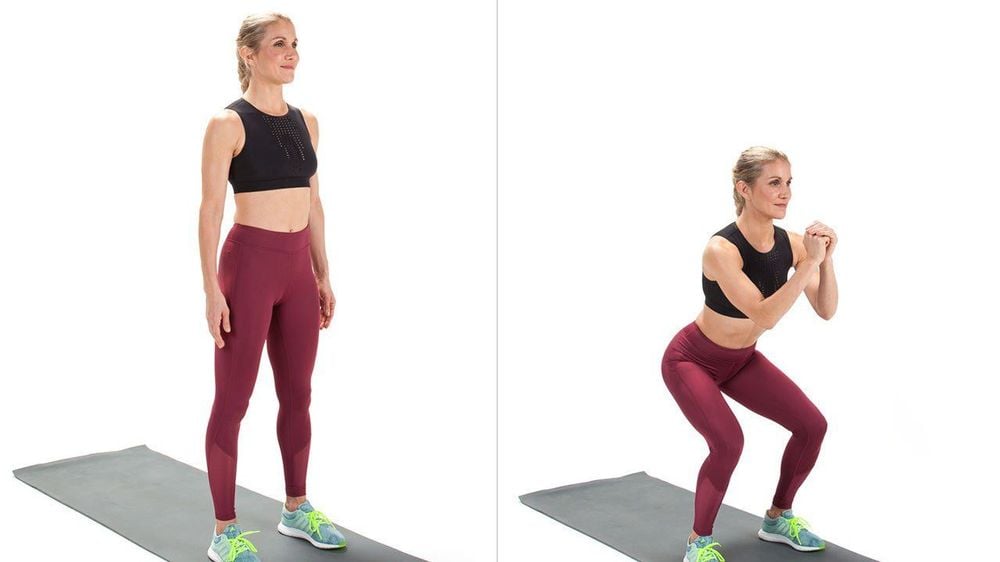
Squat là một trong những bài tập phổ biến trước khi vận động
4. The right time to warm up before exercise
The warm-up has many benefits, but it cannot be considered a stretching exercise. Therefore, it is necessary to have a reasonable time balance to be both effective and save time during the training process. At the same time, the less stressed your muscles are, the better your chance of shortening your warm-up time.
However, gym teachers often encourage us to try to maintain the warm-up exercise for about 5 - 10 minutes. This is said to be the most reasonable time for all subjects and is guaranteed to be enough to warm up the body and relax the muscles for the practitioner.
You can flexibly choose exercises according to your fitness and ability. From there, feel and give the most suitable time threshold. All advice from experts is for reference only and can be flexibly changed for each object.
Thus, we should warm up before exercising to avoid hazards during exercise. At the same time, the warm-up will help the exercise to be more effective.
Please dial HOTLINE for more information or register for an appointment HERE. Download MyVinmec app to make appointments faster and to manage your bookings easily.
References: healthline.com, verywellfit.com



